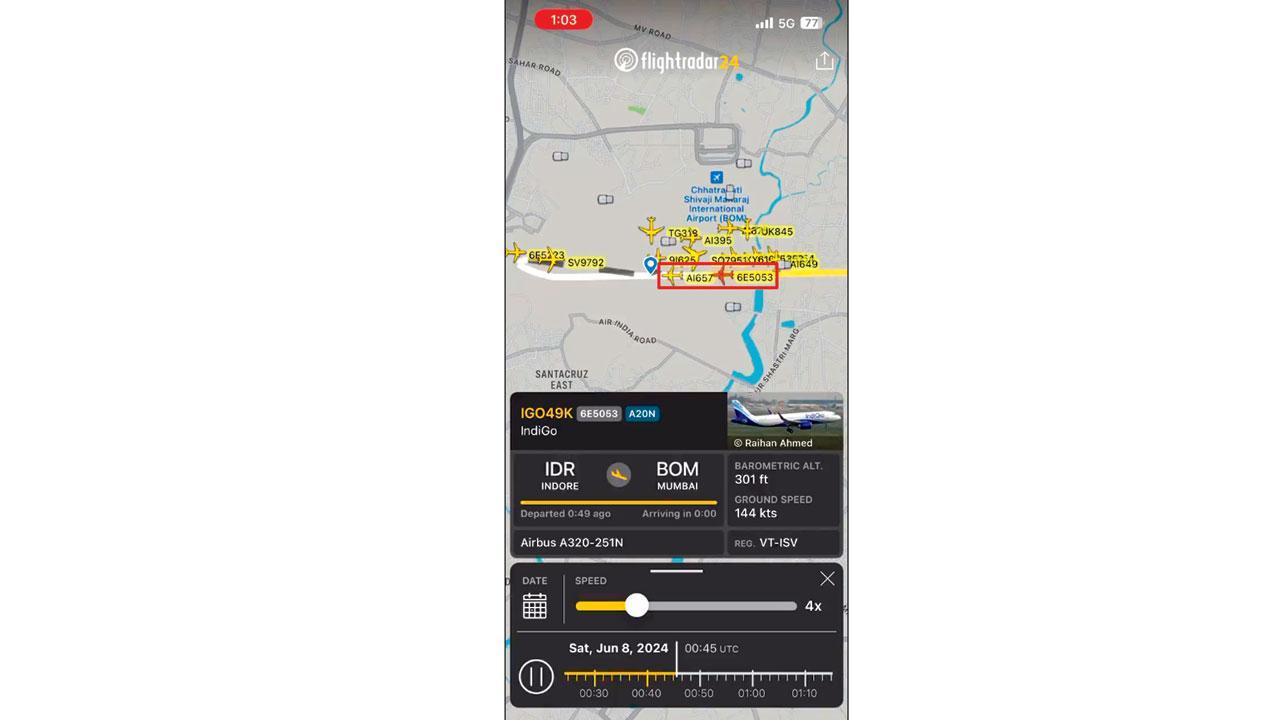Former pilot and aviation industry veteran reacts to viral video of the 2 aircraft on Mumbai airport runway

Flight radar graphic of both planes on the runway
Reacting to a viral video where two aircraft were spotted simultaneously on the same runway at Chhatrapati Shivaji Maharaj International Airport (CSMIA), Captain Shakti Lumba, a retired pilot who has also served as vice-president of operations in IndiGo, raised concerns and shed light on the possible reason for the incident.
ADVERTISEMENT
Captain Lumba said, “The video is taken from an angle and hence is deceptive. We can never know the actual separation [minimum distance required to be maintained between aircraft to prevent mishaps] between the aircraft due to this angle of videography. But two aircraft on the same runway was a mistake.”
“During clear weather conditions, IATA [International Air Transport Association] allows less separation between two aircraft. This being the case, I am not defending any pilots involved in this incident. Two aircraft on the same runway are not permitted. Ideally, the IndiGo aircraft should have landed once the Air India aircraft had left the runway. When we observe the video closely, the Air India aircraft was just airborne and would have been barely a few inches from the ground when the IndiGo aircraft landed,” he added.
“In airports where air traffic congestion is a prevailing issue, the controllers follow High Intensity Runway Operation (HIRO). HIRO in aviation refers to a set of procedures and guidelines implemented to maximise the capacity and safety of runways at busy airports. HIRO is an essential part of air traffic management, ensuring efficient and smooth operations on the ground. It involves optimising the use of runways to accommodate a high volume of aircraft, particularly during peak hours. This is being followed at many bust airports across the globe. We can see such procedures being followed at Singapore, JFK International and even Delhi Airport.”
Captain Lumba also pointed out that the congestion at any airport is caused due to the displayed block time submitted by any airline. “Airlines usually display an extended block time and when aircraft arrive early, the controller is usually in a fix as aircraft have to be brought on the ground.”
“An analysis conducted by the Airports Authority of India pointed to excessive slot allocation and poor slot adherence as a major contributor to the traffic congestion witnessed. The aircraft operating earlier than the approved slot (marked as before schedule in the data) lead to congestion and delay for other aircraft adhering to the schedule, which in turn will have a cascading effect on the other schedule movements,” he added.
 Subscribe today by clicking the link and stay updated with the latest news!" Click here!
Subscribe today by clicking the link and stay updated with the latest news!" Click here!







